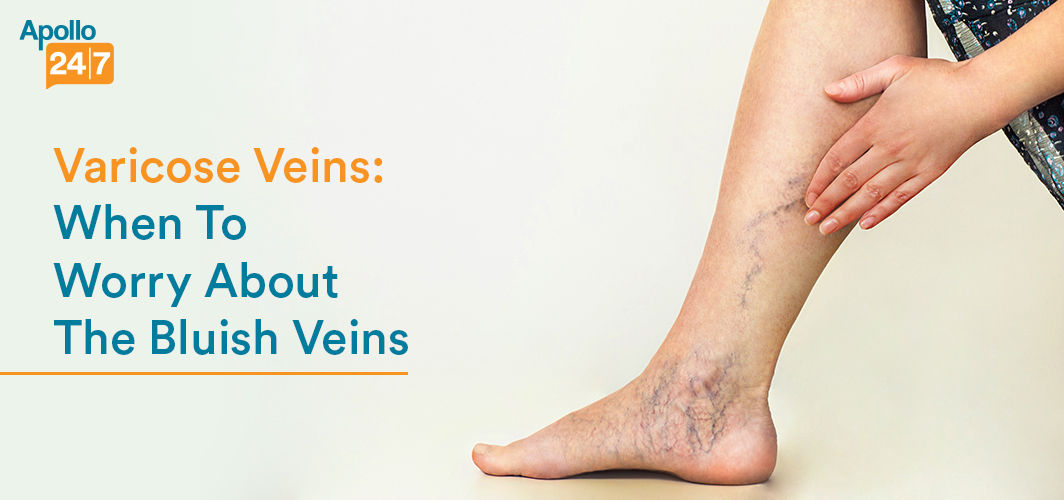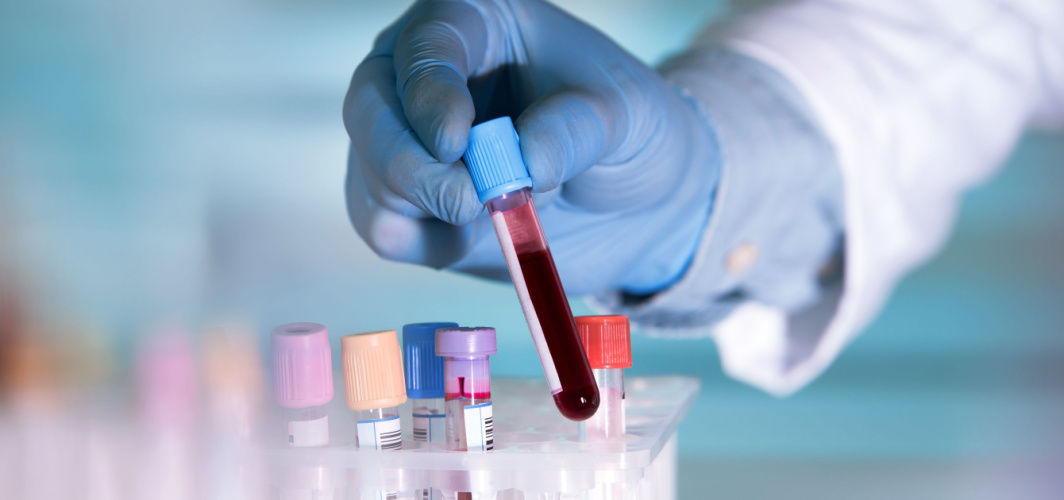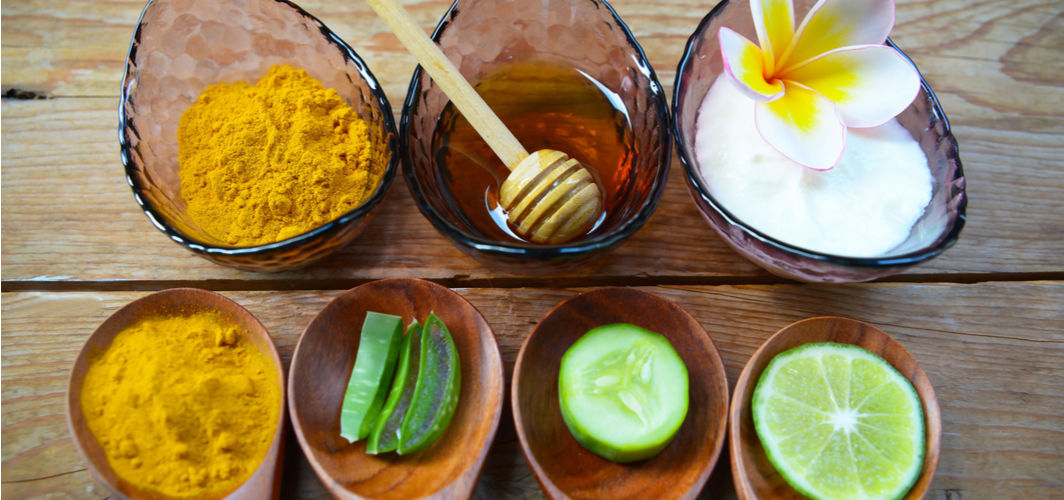General Health
Varicose Veins: When to Worry About the Bluish Veins
4 min read
By Apollo 24|7, Published on - 21 July 2022, Updated on - 20 October 2023
Share this article
0
60 likes

Varicose veins are unwanted swollen veins usually found on the lower part of the body, mainly the back side of the legs and feet. They may be purple or blue in colour and often resemble spider veins (appearance of smaller and less bulgy veins on the skin). It is common to get varicose during pregnancy. Varicose veins may not always cause pain but they cause discomfort while standing. Hence, one should not delay seeking treatment.
What causes varicose veins?
The leading cause of varicose veins is the increased blood pressure in the veins. In addition, when the valves of the heart get weak or damaged, blood starts pooling in the veins, making them look swollen and twisted. Other reasons that may attribute to varicose veins include:
- Hormonal imbalance
- Standing for longer periods
- Excess weight
- Restrictive clothing
- Pregnancy
- Ageing
What are the symptoms of varicose veins?
The symptoms of varicose veins differ from one individual to another, however, the most common ones are:
- Purple, red or bluish skin discolouration around veins
- Itching around one or more veins
- Visible bulge and bleeding from veins
- Burning, throbbing, muscle cramping, and swelling around the legs
- Pain that worsens after sitting or standing after a long time
Complications of varicose veins
Though rare, complications that may be seen with varicose veins include:
- Ulcers: Painful ulcers may sometimes occur on the skin, particularly near the ankles. A discoloured spot may indicate the need to visit a doctor to get it treated promptly.
- Blood clots: A condition known as thrombophlebitis may cause the deposition of blood clots near the swollen veins, making the leg extremely painful. This condition requires immediate medical attention.
- Bleeding: Rarely, the swollen and enlarged veins may burst, resulting in minor bleeding. This condition requires immediate medical attention to stop the bleeding.
How are varicose veins treated?
The following are the common ways to treat varicose veins as they improve blood circulation in the affected areas.
- Compression stockings- These stockings are easily available in the market and can help people get relief from pain by compressing the affected veins.
- Sclerotherapy- A unique treatment method that involves injecting chemicals into the veins, causing the veins to swell up and seal. Various rounds of this treatment are required to achieve permanent results.
- Laser treatments- Laser treatments are only effective for small-sized varicose veins. They do not show results on varicose veins which are 3 millimetres in size.
- Endo-venous treatments- In this treatment, implants are inserted by the doctors into the veins to reduce the swelling.
- Surgical treatments- If varicose veins are huge, visible and painful then a person may require surgical intervention. This involves procedures such as litigation and stripping of the affected veins.
How to manage varicose veins?
Most patients achieve enough symptom relief using long-term compression stockings, leg elevation, and oral pain killers. However, the recommended pressure that should be applied by the compression stockings is 20-30 mmHg, which can be increased to 30-40 mmHg in severe cases. Stockings should be worn daily to reduce the chances of surgery.
How to Prevent Varicose veins?
One cannot prevent varicose veins completely. However, improving the blood circulation and muscle tone may reduce the risk of developing varicose veins. Measures that may help prevent varicose veins to a major extent are:
- Keeping a check on weight
- Exercising regularly
- Eating a high-fibre and low-salt diet
- Avoiding high-heeled footwear
- Avoiding tightly fitted clothing
- Keeping the legs elevated after standing for a long time
- Changing your sitting or standing position frequently
- Walk every 30 minutes while sitting or standing for long
Why should I get treated for varicose veins?
Dr Chandra Sekhar Chevuturu, a vascular and endovascular surgeon associated with Apollo 24|7, states that “varicose veins is a common clinical condition that can have various stages. The patient can complain of dragging pain, prominent veins with skin discolouration, and evening tiredness due to the pooling of blood in the lower legs. It should be treated not only for cosmetic reasons but to improve circulation and overall quality of life. Endovenous methods like Laser therapy and Glue therapy can help treat varicose veins with high success rates.”
Varicose veins occur when the valves in the veins get damaged and swell up. Compression therapy with stockings is one of the best ways to minimise the symptoms of varicose veins. Compression stockings also improve circulation. However, excessively swollen veins may require surgical removal, especially if they bleed or become ulcers. Those who have developed excessive varicose veins should seek early treatment to avoid the development of clots.
General Health
Leave Comment
Recommended for you
%20(3).jpg?tr=q-80)
General Health
The Link between Thyroid and Skin Health
The thyroid gland secretes hormones that manage many body functions. These hormones regulate energy levels, metabolism, and skin health. Any problems in thyroid function can lead to multiple skin disorders. If you have existing thyroid disease, paying attention to any skin changes will help in the early detection and treatment of thyroid-related skin diseases.

General Health
What is a Blood Culture Test and When Should You Take It?
Learn about the importance of the Blood Culture Test, when to consider it, and how it aids in diagnosing various infections and illnesses.

General Health
DLC Test – Normal Range, Purpose, Procedure, and Results Interpretation
Understand the DLC blood test: its purpose in identifying infections and other conditions, how the procedure is performed, normal range of white blood cells, and interpreting your results.
Subscribe
Sign up for our free Health Library Daily Newsletter
Get doctor-approved health tips, news, and more.
Visual Stories

Science-backed Home Remedies for Burns and Blisters
Tap to continue exploring
Recommended for you
%20(3).jpg?tr=q-80)
General Health
The Link between Thyroid and Skin Health
The thyroid gland secretes hormones that manage many body functions. These hormones regulate energy levels, metabolism, and skin health. Any problems in thyroid function can lead to multiple skin disorders. If you have existing thyroid disease, paying attention to any skin changes will help in the early detection and treatment of thyroid-related skin diseases.

General Health
What is a Blood Culture Test and When Should You Take It?
Learn about the importance of the Blood Culture Test, when to consider it, and how it aids in diagnosing various infections and illnesses.

General Health
DLC Test – Normal Range, Purpose, Procedure, and Results Interpretation
Understand the DLC blood test: its purpose in identifying infections and other conditions, how the procedure is performed, normal range of white blood cells, and interpreting your results.